At 2:32 AM EST on April 22, 2017 a typical tiny 30-40 second seismic event was detected at the Knoxville CERI/USGS seismometer. It was also recorded at the Copper Ridge, Tn CERI seismometer, so it is not a local event. The following images display the output from their device and our device in response to that remote event. This particular event is chosen to be shown because (1) it happened this morning and (2) it is a typical tiny event that shows off the capabilities of this device well.
This is the CERI/USGS seismometer reading, downloaded from their website. The relevant event downloaded from their website is cropped out and marked with asterisks.

This is the vector magnitude graph for the 2 - 3 AM time period of our vector seismic device showing its response to the same event. The graph shows 1 second per time points, therefore 3600 readings per hour. The peak at 2:32 AM is approximately 1/10 of the device's full scale.
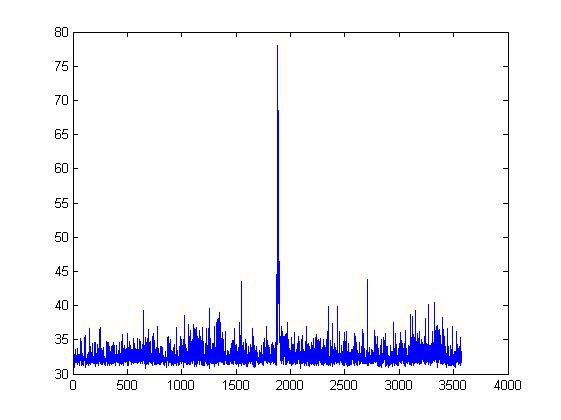
Here is the vector magnitude data from the event on a shorter time scale - x axis is seconds.
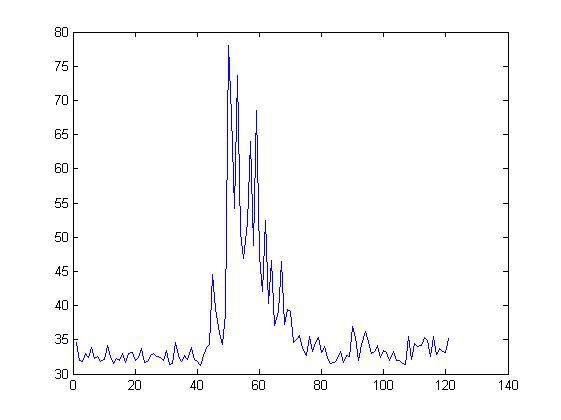
The next graph shows the distribution of the vector magnitude over that hour. The tiny and brief tremor would not significantly affect the overall distribution of the noise over an hour, but those time points were removed. The important point is that this data does not conform to an ideal gaussian probability (red curve.) This data is skewed to the right, as would be expected if a significant proportion of seismic noise is coming from local sources. It is exactly this hypothetical characteristic of seismic noise that this project was hoping to detect and exploit. The whole purpose of the femtoampere amplifier is to broaden the distribution, so subtle changes in the "right side" shoulder region can be discriminated easily. This is only one hour's worth of data - the incoming data is matched to a probability table that is based on the first 100,000 measurements after the program starts up. Then every new data point is assigned a probability value from that table as well.
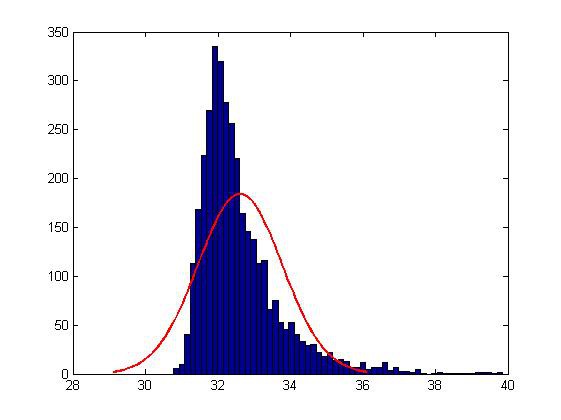
The next graph is the 2D geospatial distribution of the averaged location of the noise energy timepoints between 2 AM and 3 PM. -Pi radians would represent South), 0 radians would represent an average of North) +Pi radians would be South again. Each one second time point is the average of 50 calculated vectors. For pure noise with a well calibrated device, the peak of the gaussian curve should be at zero. Local noise from random sources would not be expected to shift the gaussian distribution of noise direction. For this time interval the actual measured average was -0.04818 radians. Again, each new location measurement is matched up to a probability table derived from 100,000 measurements and assigned a probability from that table.
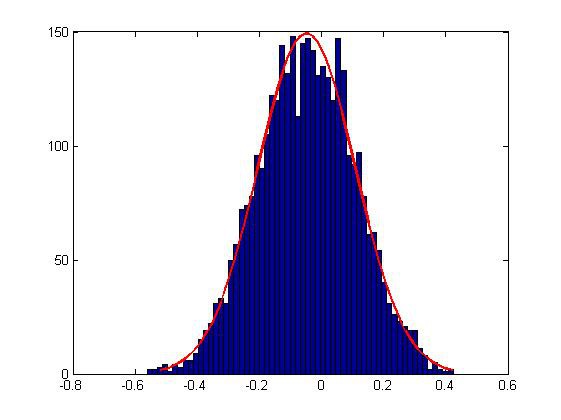
The next graph is the combined probability statistic for the 2 - 3 AM time period. The combined probability is basically the overall probability of having readings of that particular average magnitude coming from that particular average 3D radial direction. The two independent probabilities are multiplied in order to get the combined probability result. Note - there is essentially no correlation between the location and the magnitude when large numbers of noise level signals are analysed. It's clearly different for event related signals. This graph shows a 5 second running average of the data. Note that this is a logarithmic scale - the variation in the probability statistic is actually quite large.
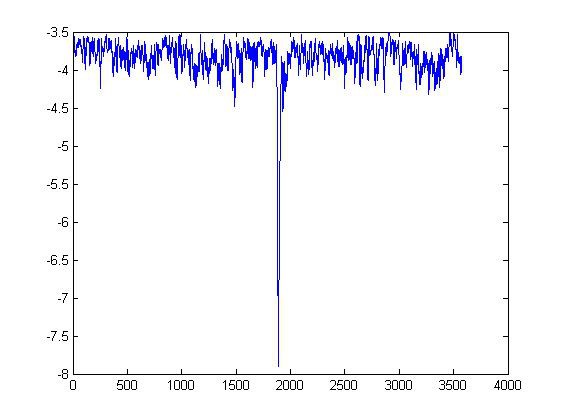
Here is the probability data on a shorter time scale - again, x axis is in seconds. The data is from the same time interval shown above for the vector magnitude data. This is the actual data, not a 5 second running average. Because this is a logarithmic scale, there is a million-fold change in this value within seconds of the appearance of the tremor event. The traditional USGS seismometer barely detected the event (see above).
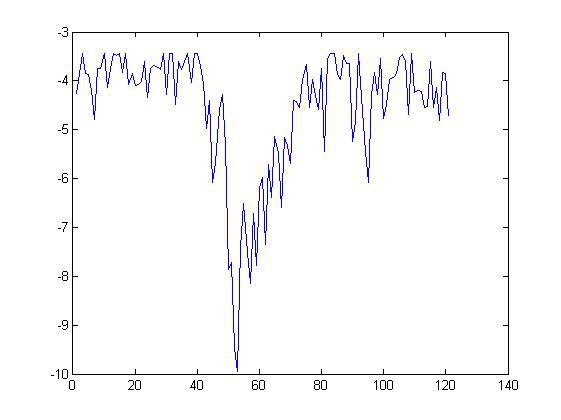
There was no real discrepancy this morning between the onset of the combined probability event and the vibration magnitude event, because this was not a local event. An earlier seismic event some months ago was only 12 miles away form the device and it was predicted approximately 50 seconds in advance by a major deviation in the combined probability statistic. More experience with truly local events is clearly needed
 Michael Doody
Michael Doody
Discussions
Become a Hackaday.io Member
Create an account to leave a comment. Already have an account? Log In.
Right now I have 4 versions of the device connected to the home network. They are not identical but they are all quite similar in behavior. Each has had to be calibrated differently in software. Two are in my garage sitting on a massive concrete slab, one is in the house and one is outdoors bolted a concrete pad. Eventually I want to have a device mounted on bedrock, far away from any human activity.
Are you sure? yes | no
Where is your device located when it's taking measurements?
Are you sure? yes | no
The best measurements are with the device located on the garage slab. The measurements from the outdoor device are also quite good, but weather (wind & thunder especially) affect its readings more than I would like.
Are you sure? yes | no
I downloaded your PCB design files, very well done :) When I have some free time I am going to dabble in this project, it's so facinating.
Are you sure? yes | no